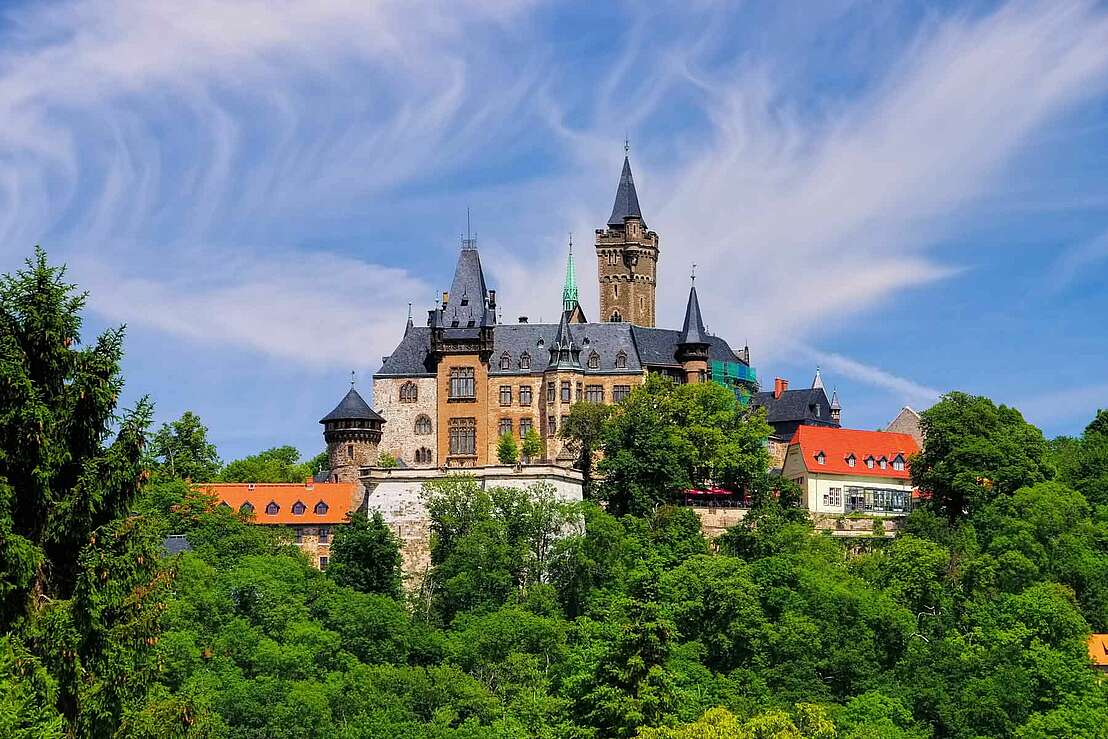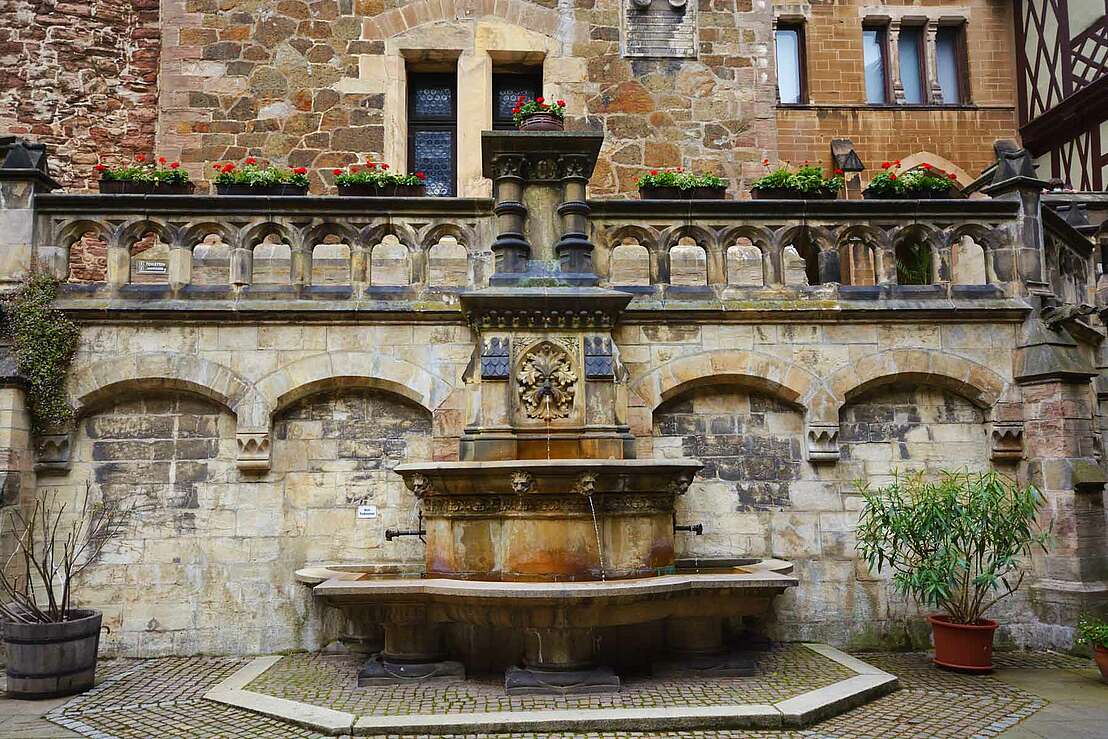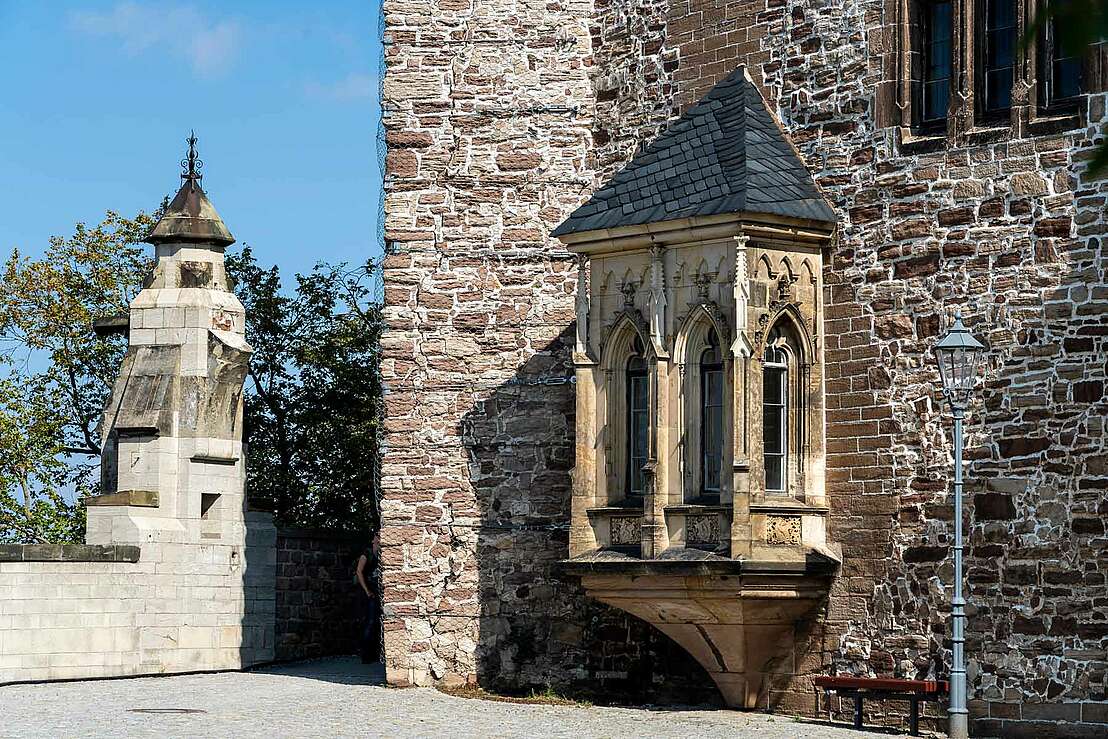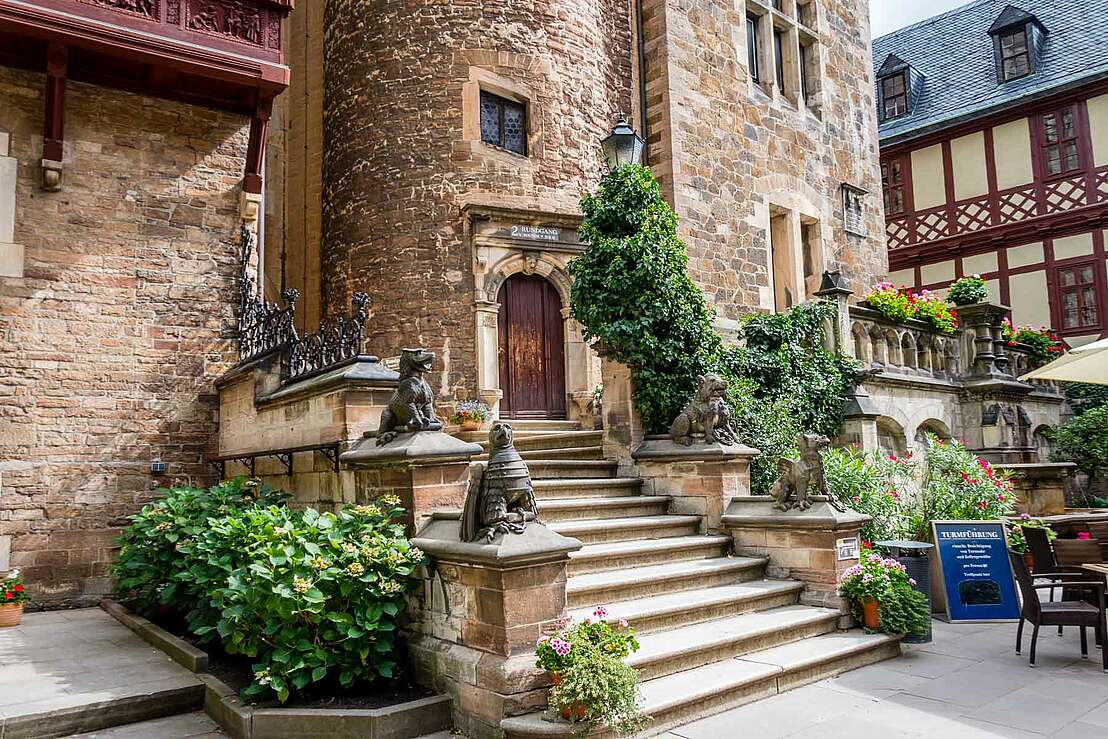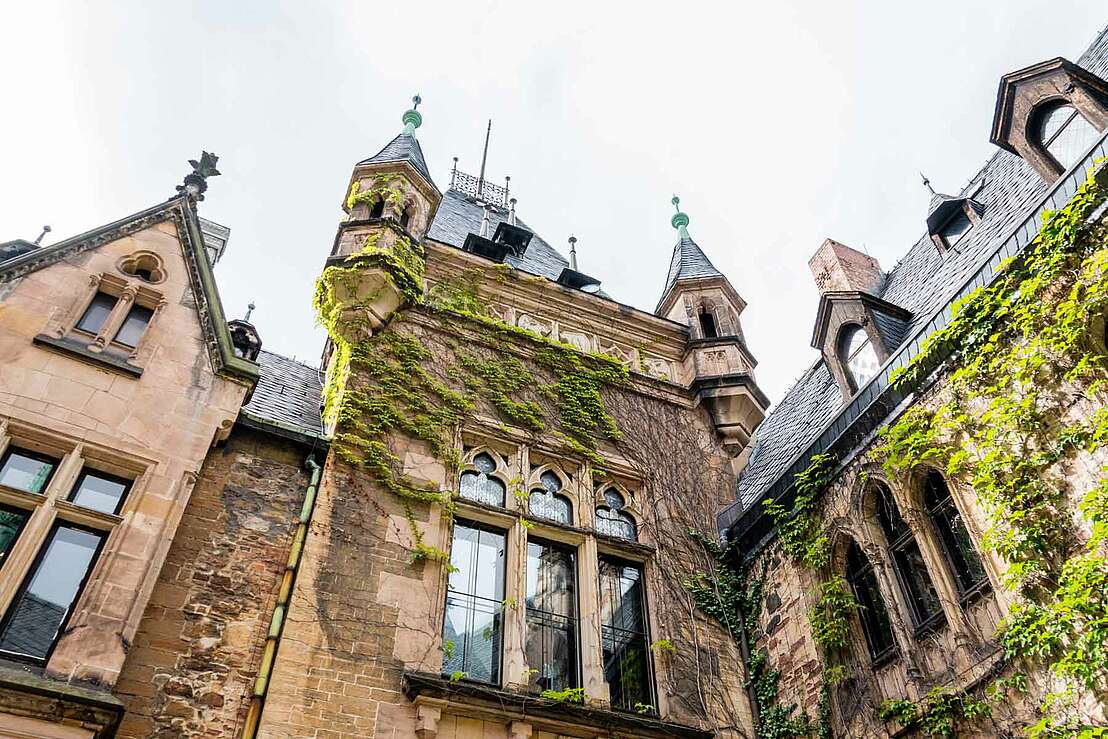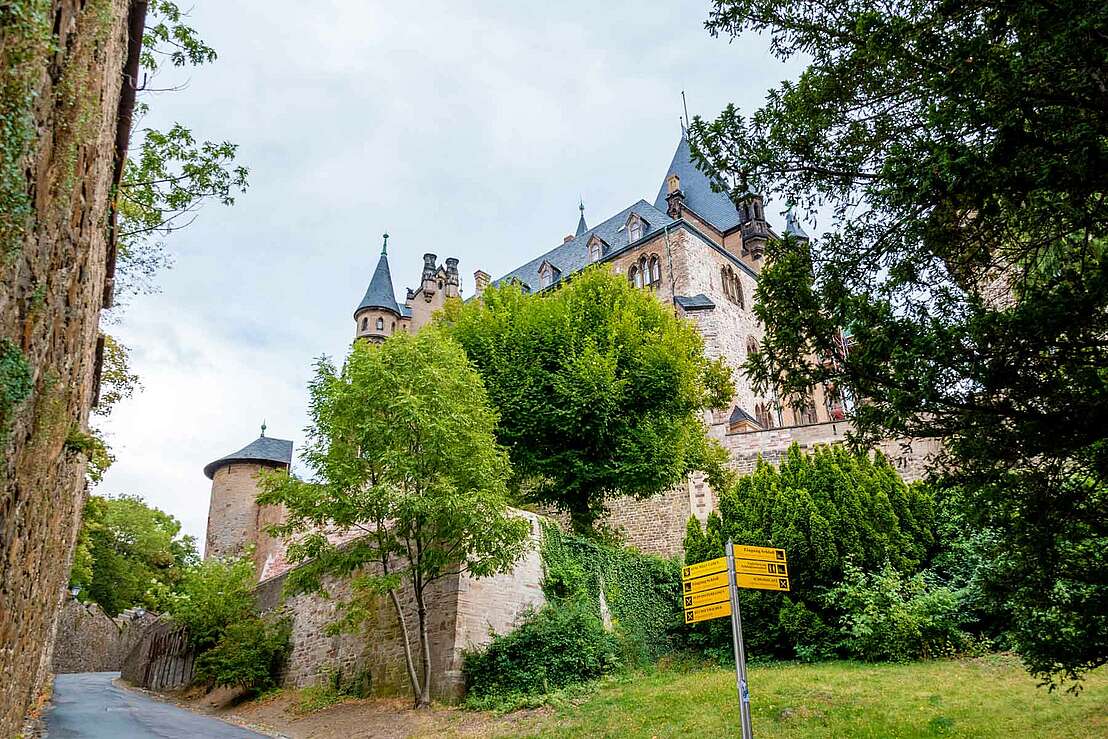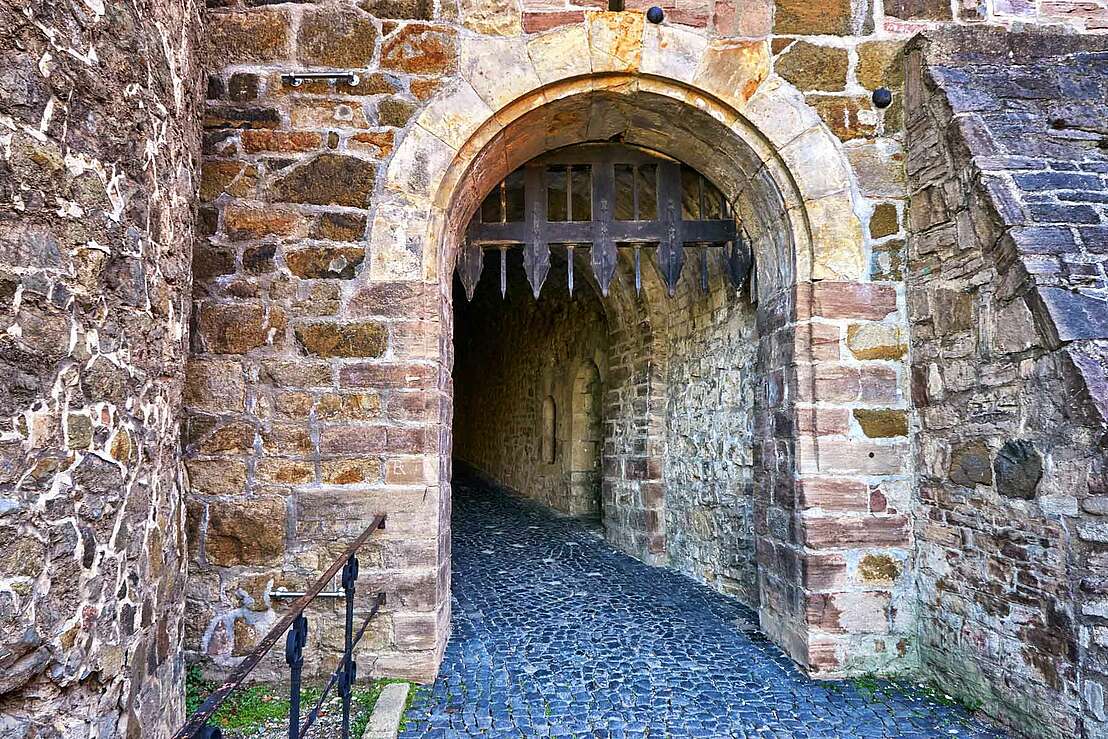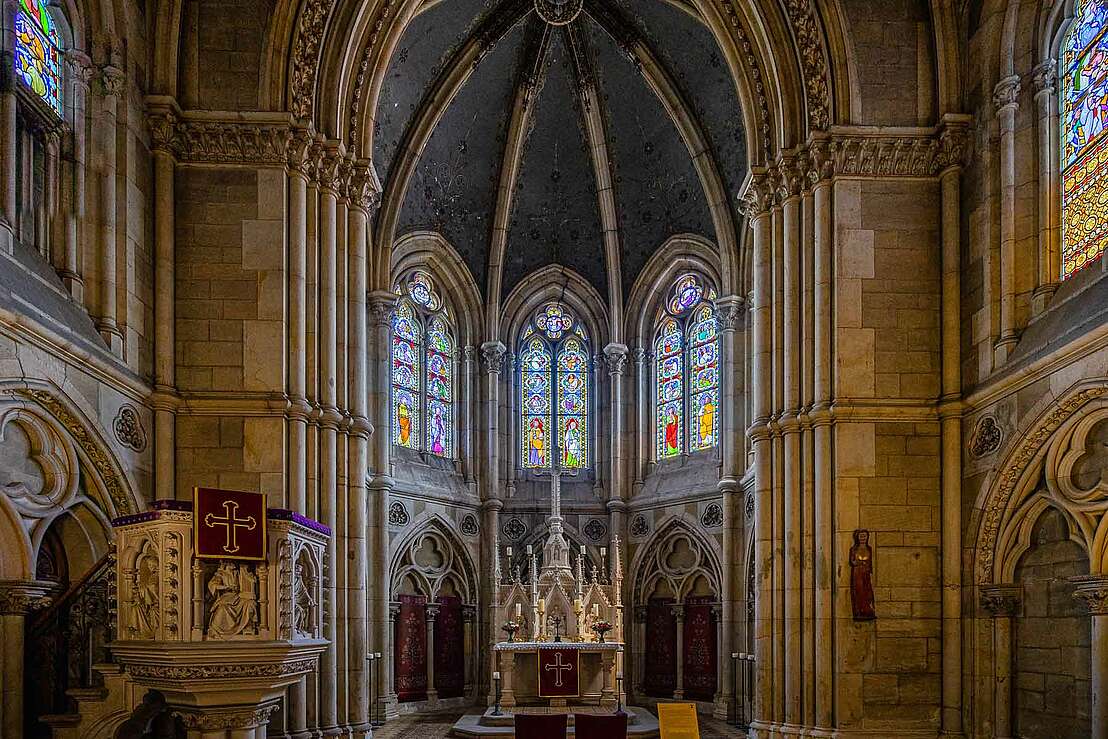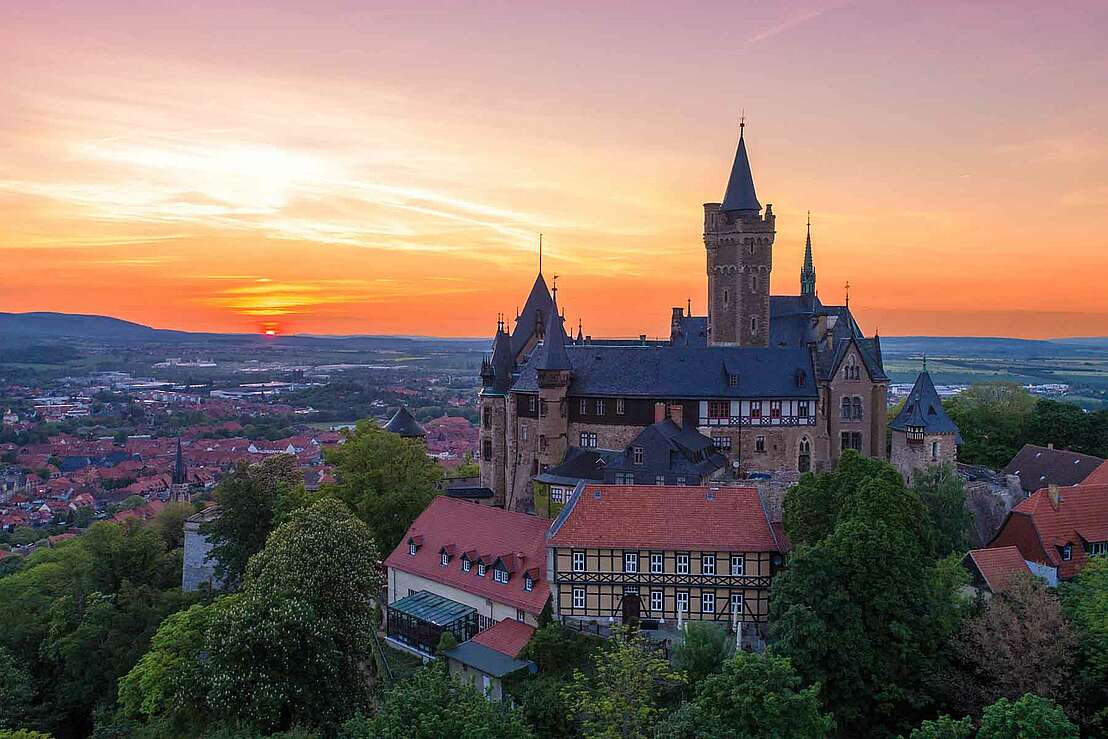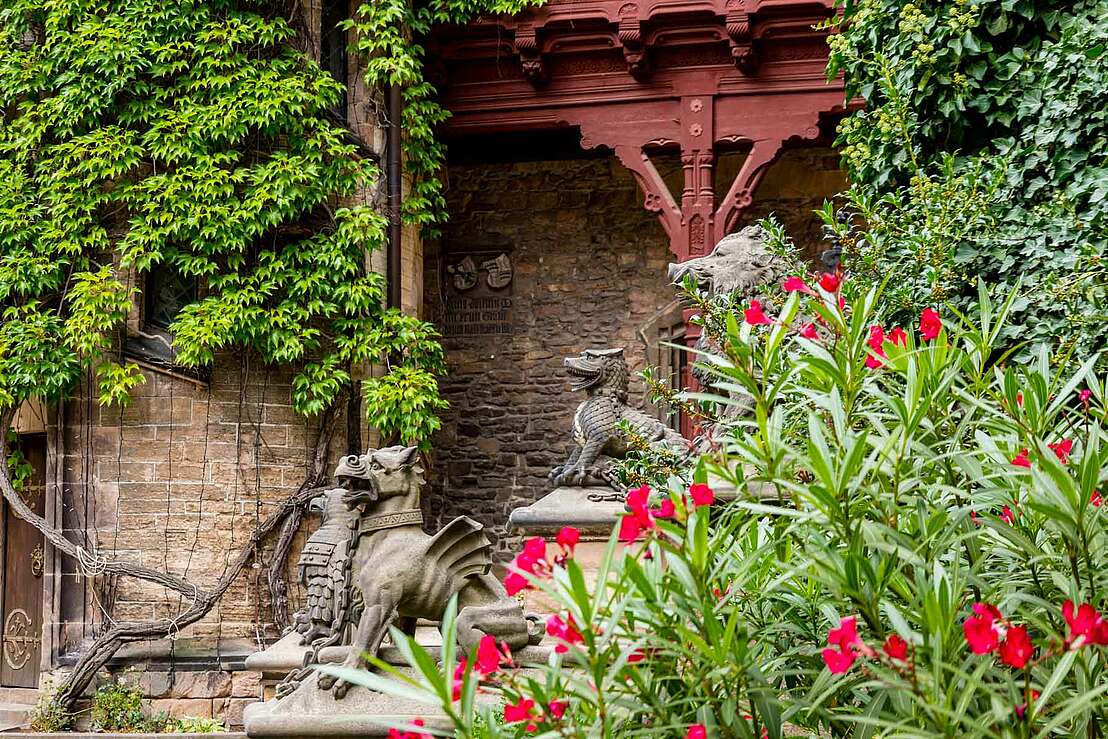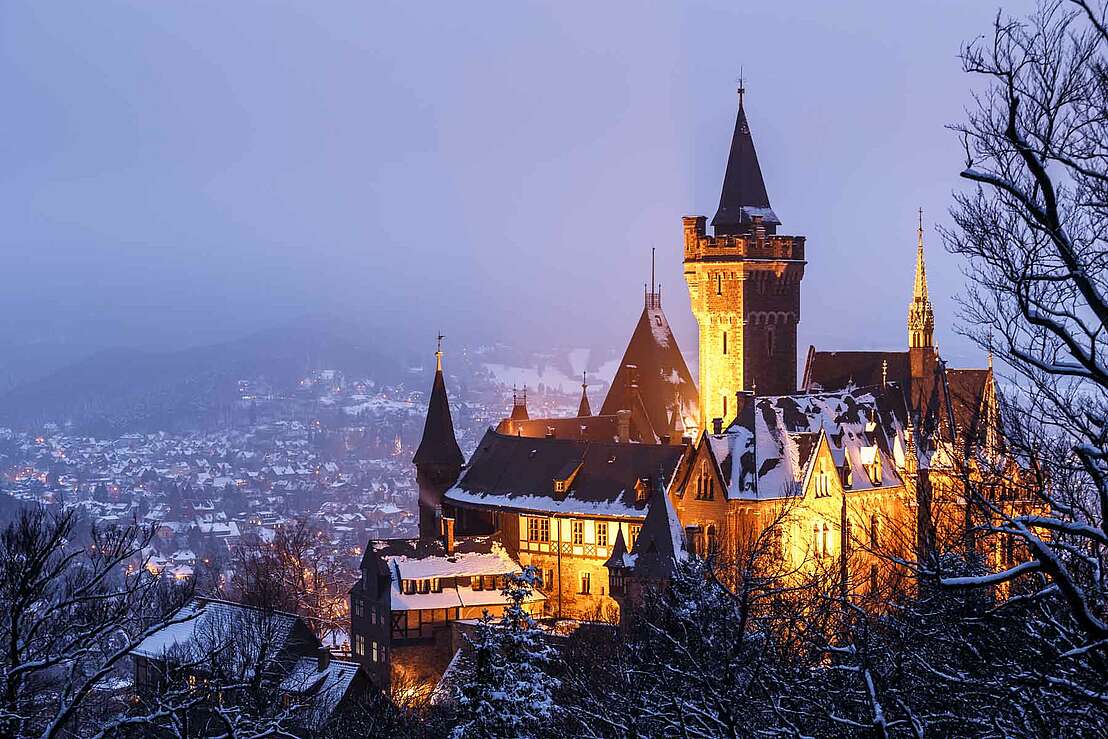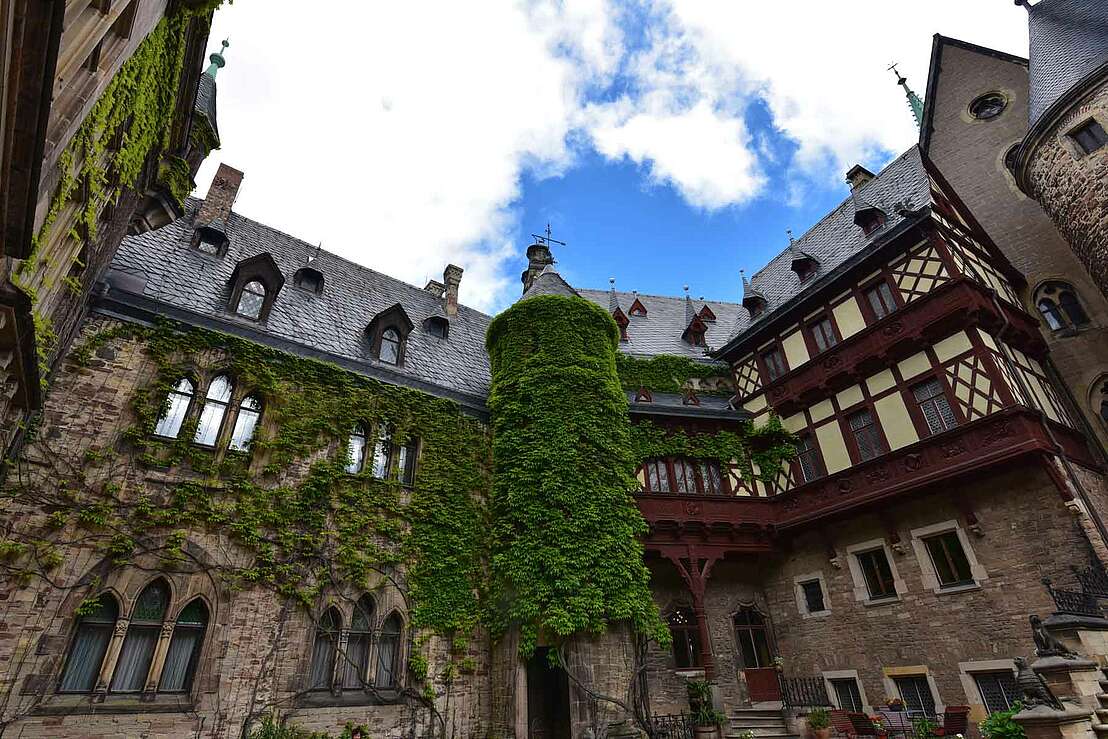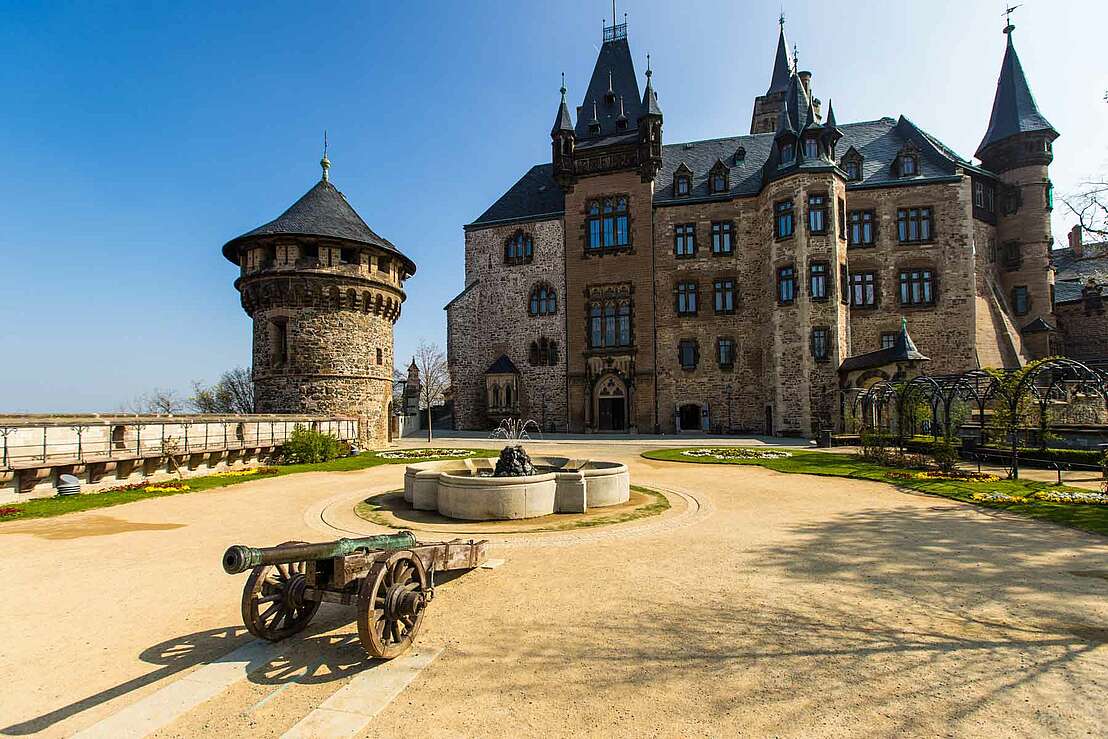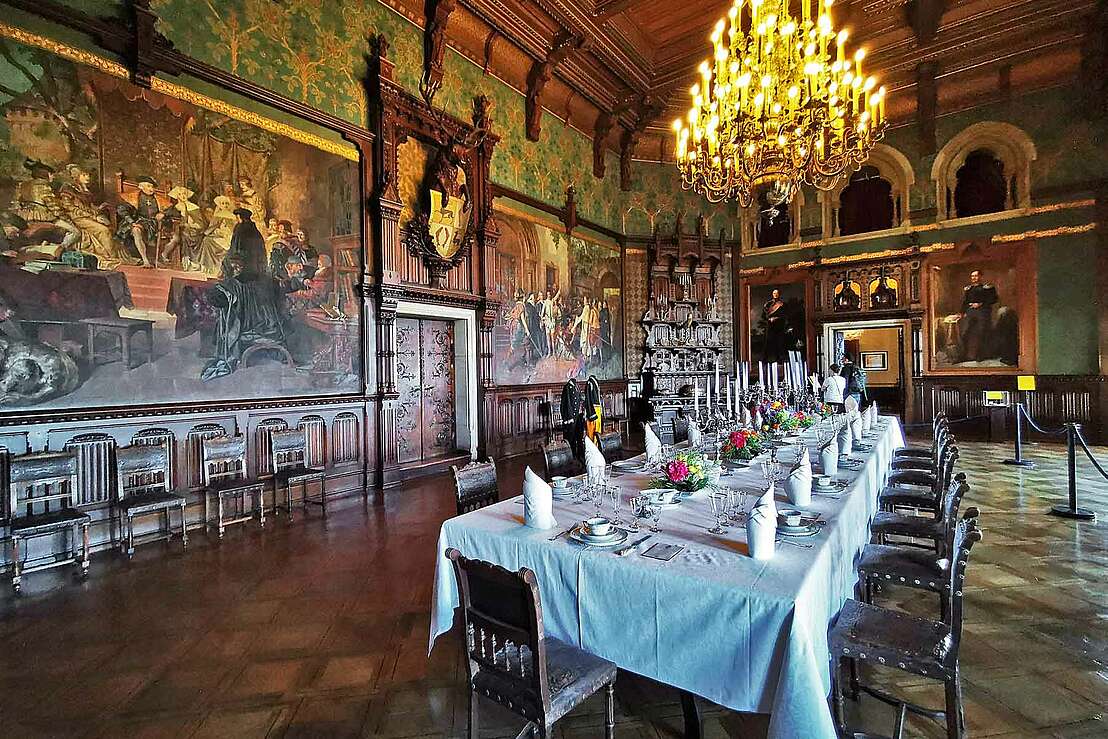Schloss Wernigerode

From hilltop castle to fairytale castle
Excursion destinationsHarzspots Vacation planner
| Name | Date |
|---|
Wernigerode, the "colourful town on the Harz Mountains", has another landmark that is known far beyond its borders in addition to the striking town hall with its castle complex visible from afar. The castle complex, remodelled in the style of North German historicism, is often referred to as the "Neuschwanstein of the North". Here you can find out more about the long and eventful history and tourist significance of Wernigerode Castle in the Harz Mountains.
Location and how to get there
Wernigerode Castle is enthroned on a hill in the south-east of the town. The castle complex is centrally located. The Brocken can be reached in less than an hour by car. Once you have reached Wernigerode along the B6, follow the signs to the town centre. Vehicles can be parked in the "Altstadt/Schloss" visitor car park.
If you have travelled by train, you can reach the car park in the old town along Rudolf-Breitscheid-Straße within a few minutes. The central car park is also the first port of call for coaches.
The quickest routes to Wernigerode Castle:
- Walkers: Follow the signs from the car park. The quickest way to get to the castle is via Breite Straße in around 20 minutes.
- Cyclists: The castle can be reached directly as part of a tour through the Harz Mount ains. Don't let yourself get out of breath, as the incline is 23 per cent.
- Romantics: The little train stops behind the town hall every 20 minutes.
- Visitors with little time: The Wernigerode Castle Railway can be boarded at the Old Chapel and the car park. Departures are every 25 minutes
A look into the history books
Wernigerode Castle was first mentioned in documents in 1213. It is assumed that "Castrum Wernigerode" dates back to the beginning of the 12th century and was built over an existing settlement.
In the Middle Ages, Wernigerode Castle was considered one of the mightiest castles in the Harz Mountains. The builder, Count Adalbert, came from the Hildesheim region and was commissioned to consolidate the imperial power in the Harz Mountains.
Wernigerode Castle was built on the summit of the Agnesberg as a hilltop castle. Important trade routes crossed at its foot. Residential buildings for the local traders and craftsmen were built directly into the castle walls. Due to the numerous alterations, little remains of the original "Hofstubenbau" or "Steinernes Haus". You can visit the altered buildings today as part of the museum tour.
The appearance of Wernigerode Castle in the Harz Mountains
Today, the inner courtyard looks spacious. The keep and castle chapel were once located here. Both buildings were demolished in the 14th century. A new and larger church was built on the east side of the castle complex. The tower on the north-west side was built in the 14th century and secured the castle's defences.
In the late Middle Ages, the wooden palisades above the moat were replaced by a stone curtain wall to further protect the castle from attackers. The core castle was equipped with a comprehensive defence wall consisting of moats, walls, gates and kennels. Until the 16th century, the castle was considered impregnable and was spared the devastation of the German Peasants' War.
The military protective function was cancelled at the end of the 17th century with the conversion into a baroque residential castle. The half-timbered "summer building" was built on the south side of the castle.
A decisive structural change was made to Wernigerode Castle in the middle of the 19th century. Count Otto zu Stolberg-Wernigerode, Vice-Chancellor of the German Empire, was keen to emphasise the representative qualities of the castle building. The expansion into a magnificent palace took place between 1862 and 1885.
The inner courtyard was given the picturesque character it still has today. The Viennese architect Friedrich von Schmidt provided the design for the palace church, which was consecrated in 1880. Today's building complex comprises around 250 rooms and has numerous towers. The interior architecture is characterised by parquet floors, wall panelling and coffered ceilings.
Things to see at Wernigerode Castle in the Harz Mountains
At Wernigerode Castle, you can take a journey back in time. Around 50 rooms furnished true to the original take you back to the imperial era. Exhibitions of furniture and arts and crafts from the 16th to 19th centuries complete the tour.
You should not miss the following sights on the castle grounds:
- Castle terraces: The stables for the horses were once located here. Today, you can feast in a cosy atmosphere at the foot of the castle and enjoy the view as far as the famous Rosstrappe.
- Castle church of St Pantaleon and Anna: This is a historic hall church. Worth seeing are the stained glass windows, the neo-Gothic altar and the pulpit made of French limestone.
- Smoking parlour: This is where the nobility would retire to enjoy a cigar. The room can be used for weddings and is accessible for special events.
- Museum shop: In the historic wine cellar you can find a nice souvenir to remind you of your visit to Wernigerode Castle.
On to the tour
Guided tours of the castle are offered daily between 10 am and 6 pm between May and October. In the winter months, the castle is open between 10 am and 4 pm. Wernigerode Castle is closed on Mondays between November and April.
The Wernigerode Castle Festival, which takes place in the castle courtyard, is a cultural highlight. If the weather is bad, the festival is held in the princely stables.
We have another excursion tip for all fans of Wernigerode Castle: Wernigerode Castle can be admired in miniature in the Citizens' and Miniatures Park and a further 60 models of well-known regional sights will whet your appetite for a holiday in the Harz Mountains.
Photo Dining room in the castle - © Sirleonidas via Wikimedia Commons CC BY-SA 4.0 DEED
Harzspots gives you the
Komoot Harz Region Package for free!
Use our voucher from the Outdoor Navigators Komoot and get the „"Harz Regions Package“ free of charge. From now on you can get to know all hiking and cycling routes digitally and, if you wish, also voice-guided!
 Rating
Rating Rezensionen
Rezensionen